#draft horse
Text
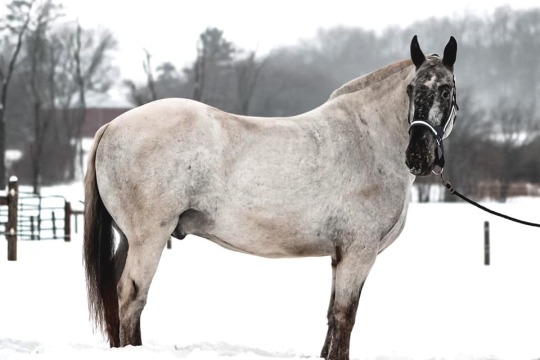
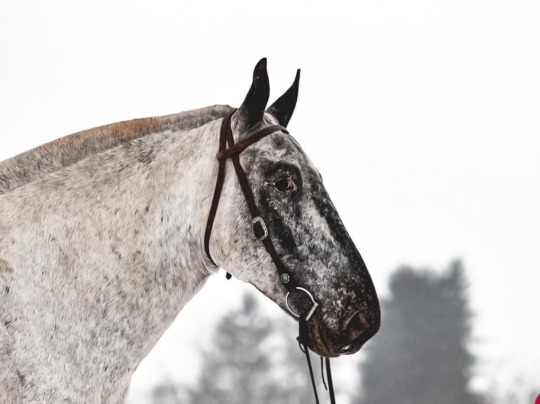

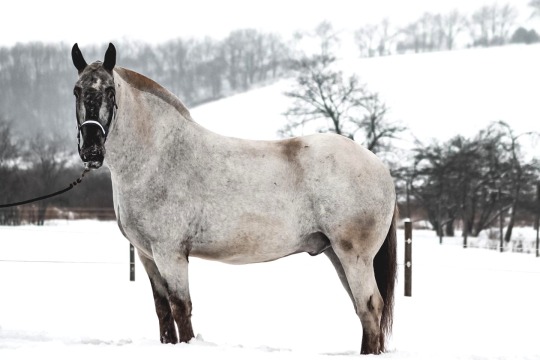


Appaloosa x Percheron cross gelding.
5K notes
·
View notes
Text

Study in pencil of a Nordsvensk brukshäst (North Swedish Horse).
#art#artist#artists on tumblr#animal art#horses#horse#equineart#horseart#pencil#pencil drawing#drawing#nordsvensk brukshäst#north swedish horse#draught horse#draft horse#horse breeds
7K notes
·
View notes
Text

my aunt's old Percheron, Marquis.
Caran d'Ache Neocolor pastels on bristol paper.
5K notes
·
View notes
Text
The other day, I went down the rabbit hole of "cute donkeys" and came up with my head full of things I didn't know about mules (the hybrid offspring of a horse and a donkey), and why they were once so coveted as work animals.
Brace for info dump, while enjoying this lovely photo of a trio of draft mules.
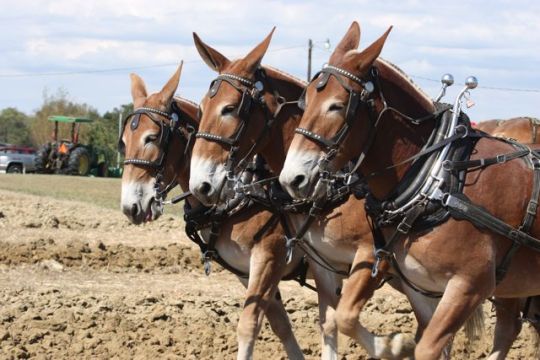
The explanation is hybrid vigour (when hybrid offspring have enhanced traits compared to its parents):
Mules are stronger, hardier, healthier, have better endurance, harder hooves, sturdier skin and can handle extreme weather better than horses or donkeys. They are also more patient, more intelligent, and easier to handle than either of their parent species. Horses may be faster, but that's about the single thing they're better at than a mule of the same size.
So mules, being all around nicer to work with and getting you more work for the same amount of feed, and with less hassle, were preferred for just about every job purpose.
Habby du Magnou, a Poitevin Mulassier mare, and her daughter Lady du Magnou, a rare Poitevin mule

But since horses have 64 chromosomes and donkeys have 62, mules end up with 63 chromosomes, which means they are almost invariably sterile. That's because biology gets very confused when trying to split an uneven number of chromosomes neatly in half to create germ cells. There are a few documented exceptions of fertile mule mares (never stallions), but they are very, very rare. So you have to keep crossbreeding the two parent species to produce them, usually by breeding a donkey sire (jack) to a horse dam (mare). This is because it's easier for a 32 chromosome egg to incorporate a 31 chromosome sperm into a viable zygote (fertilised egg) than vice versa.
Because of this, there was (and still is) in France a breed of absolutely massive draft horses, the Poitevin Mulassier, and a breed of big-ass donkeys (pun intended, but honestly they're arguably the largest donkeys in the world, and shaggy like Highland cattle), the Baudet du Poitou, two breeds whose main purpose was to breed the enormous and super-strong Poitevin mule.
The Poitevin mule



This absolute unit was the must-have work-animal for all kinds of farm and industrial work for centuries, and a significant French export, until mechanisation made these magnificent creatures obsolete.
With no demand for the Poitevin mule , its parent breeds dwindled, almost to the brink of extinction. Determined conservation efforts during the last few decades are slowly bringing their numbers back up, but they're very far from their heyday, when some 20,000 Poitevin mules were born annually.
The Poitevin Mulassier
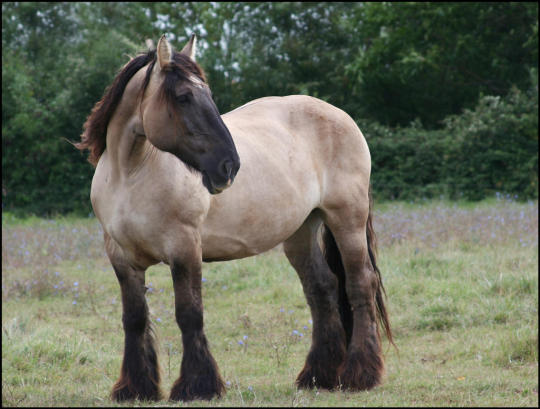


Both the parent breeds are still endangered, which means most of the current effort is directed into bringing up the numbers of Poitevin horses and Poitou donkeys. This means breeding horses to horses and donkeys to donkeys, with very few breeding opportunities allowed to produce the Poitevin mule. Only about 20 of those are born each year.
The Baudet du Poitou


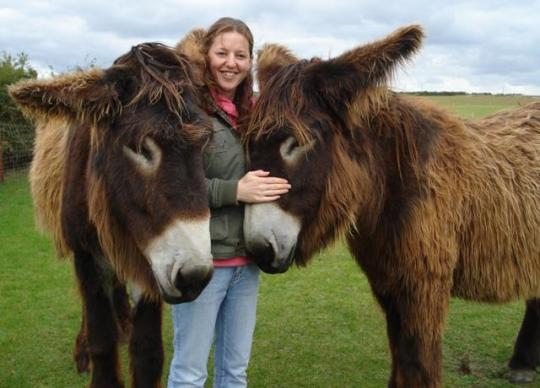
#mules#poitevin mule#mule poitevine#donkeys#baudet du poitou#poitou donkey#horses#draft horse#poitevin mulassier#trait poitevin#trait poitevin mulassier
38K notes
·
View notes
Text
Pensioner sets off on 600-mile pony trek with pet dog in saddlebag
Jane Dotchin, 80, has been making the unusual journey from Northumberland to the Highlands since 1972. (Story from STV News)

An 80-year-old woman who wears an eyepatch is on an annual trek with her pony from England to the Highlands – on a seven-week adventure which began in 1972.
Jane Dotchin packs her saddlebags onto her trusty pony’s back every year, and heads to the hills from her home near Hexham, Northumberland, on an epic 600-mile trek to Inverness, covering between 15 and 20 miles a day.
She set off on August 31 with her steed, Diamond, aged 13, and her disabled Jack Russell named Dinky for company, from the off-grid smallholding where she lives.
She carries everything she needs including her tent, food and just a few belongings – and despite wearing an eyepatch is determined to continue as long as she can.
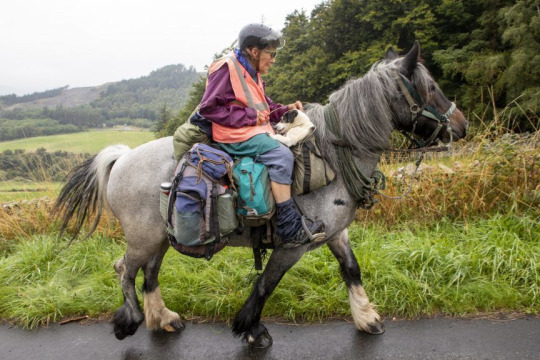
Ms Dotchin said: “My mother would look after my other ponies but she wasn’t that keen on looking after my Halfinger stallion, so I rode him down to Somerset to see a friend, which is about 300 miles.
“It was a bit of a hard slog, but it was good.”
After that initial journey, she caught the taste for the open road and travelled to visit friends near Fort Augustus, near Loch Ness, every autumn since.
The journey takes around seven weeks depending on weather and Ms Dotchin tries to stop off to see people she has met over the years.
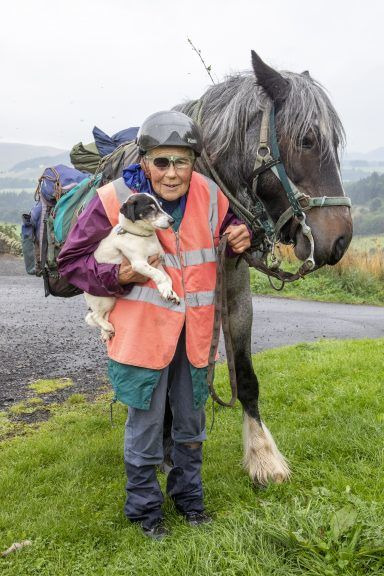
She said: “I refuse to go slogging on through pouring wet rain.
“There are a few different routes I can take depending on the weather.
“I don’t want to go over hilltops in foul weather, but I work it out on the way.
“I don’t bother with maps, I just keep to the routes I know.
“It is nice to go and see [people] again – I ring them up in the morning to say I’m going to be there in the evening.
“I don’t warn them too far in advance, because if the weather suddenly changes or I decide to stop early then they can be left wondering where I’ve got to.”
Disabled Jack Russell Dinky, who has deformed front legs, travels in a saddle bag.
Ms Dotchin said: “She manages fine, when there is a nice grassy track she gets out and has a run, but she doesn’t like stoney ground but she is a nice hot water bottle for me in the tent.”
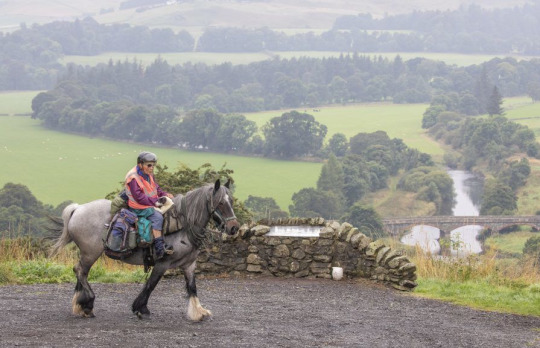
She said: “I asked for something good and solid in my old age and he got me a cob from Ireland. I struggle to get on her half the time, but otherwise I manage fine.”
Her diet consists of porridge oats, oatcakes and cheese which is bought at local shops.
She prefers to make porridge with milk, but water will suffice.
Ms Dotchin added: “You can always boil it from a stream.”
Her bathroom habits are equally DIY, and she said: “I dig a hole.”
Ms Dotchin is devastated by the littering she has seen over the years and said Cumbernauld, North Lanarkshire, is somewhere she finds “shameful” due to the amount of rubbish.
She said: “It’s appalling, in particular single used barbecues which are left lying all over the place.
“Cumbernauld is the fly-tipping capital of Britain.
“There are some lovely people there who let me camp, but some of it is so disgusting and shameful.”
Campervans on single track roads have also become a more persistent problem.
She said: “Drivers just didn’t seem to know how wide they were, I was forever just about getting swept off the roads by them.”
The right to roam has helped with countryside access, but she said: “There are still some locked gates or little side gates that you can’t get a horse with packs on through.”
For emergencies she carries an old mobile phone as the battery lasts six weeks.
Ms Dotchin said: “I keep it switched off and just ring out to ring up landowners to get gates unlocked or to warn people when I’m coming but sometimes the trouble is getting a signal.”
During the foot and mouth crisis in 2001 she went on bicycle instead.
She said: “I covered many more miles with the dog in a pannier but it was not the same, I missed my horse.”
In recognition of her independent spirit, and many years of long distance trekking, she received The British Horse Society lifetime achievement award last year, which she said was “a bit of a surprise.”
During her travels she witnesses rutting deer and stags fighting in the autumn, and foxes.
She said: “There is always something interesting happening and there is never a dull moment.
“I will probably be stopped one of these days.”
#horse#news#irish cob#draught horse#trail riding#hacking#horseback riding#equestrian#horseblr#horse riding#draft horse#equine
20K notes
·
View notes
Text
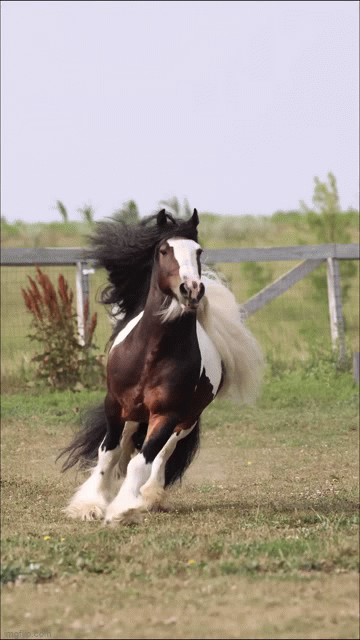
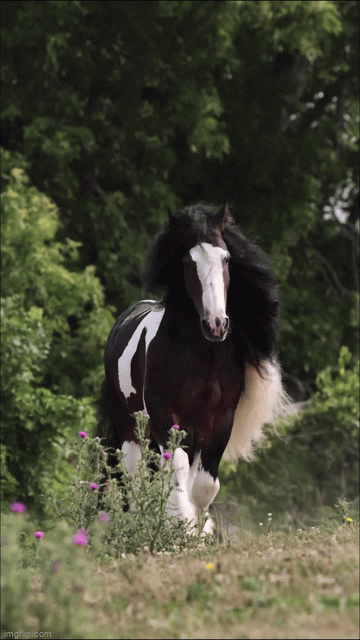
Irish Cob Stallion SD Worth It
2K notes
·
View notes
Text

Mu, the champion Percheron stallion at the Ohio and Indiana State Fairs—Owned by J. Crouch & Sons, Lafayette, Ind.
The Breeder’s Gazette, 14 September 1916
#stallion#Percheron#draft horse#draught horse#heavy horse#heavy draught#Mu#1916#The Breeder's Gazette
269 notes
·
View notes
Text

VII The Chariot
163 notes
·
View notes
Text
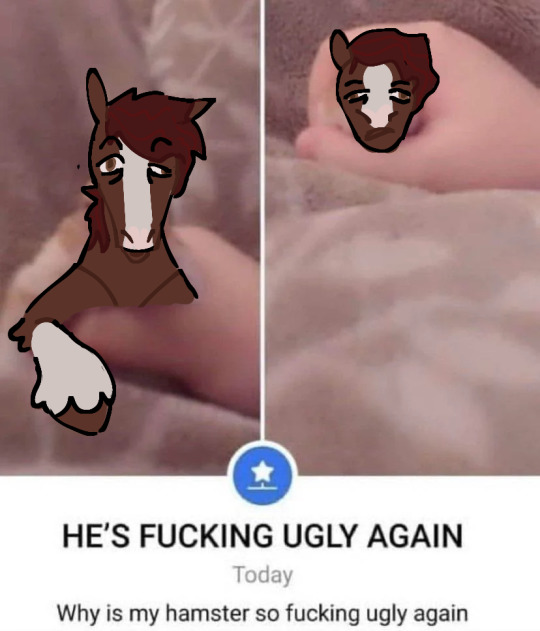
HE'S FUCKING UGLY AGAIN
#my little pony#mlp oc#mlp fim#mlp art#pony#oc#mlp g4#mlp#my art#mlp memes#mlp oc art#trouble shoes#draft horse#clydesdale#rockhoof#ugly hamster meme
111 notes
·
View notes
Text

Day 2/69
268 notes
·
View notes
Text

self absorbed
#one of my favorites of the blue exies for reasons that r probably . well#my art#ocs#furry#anthro#horse#unicorn#draft horse#this was rly fun 2 draw#edit i had to fix his hand oops . its better now
96 notes
·
View notes
Text

Canadian draft cross.
286 notes
·
View notes
Text
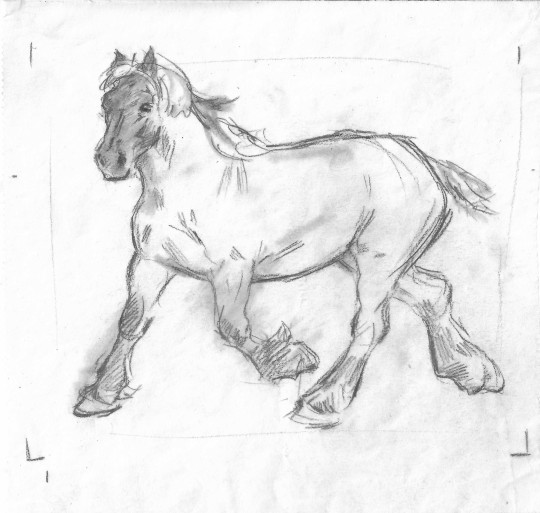
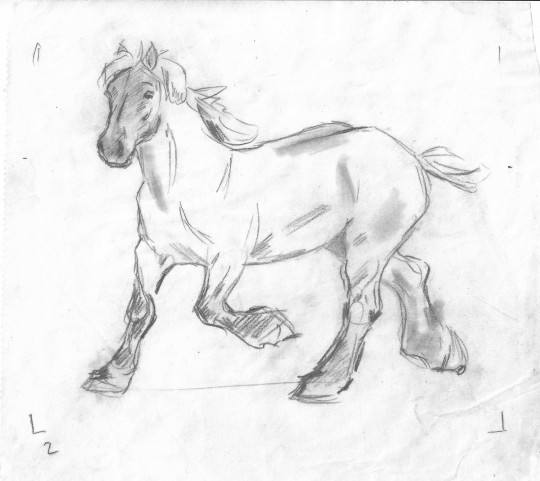




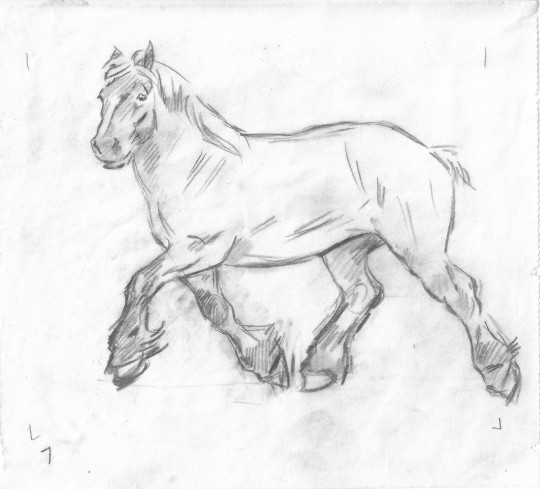



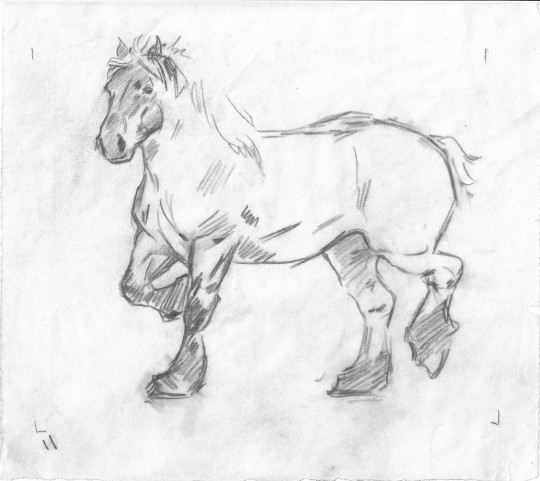


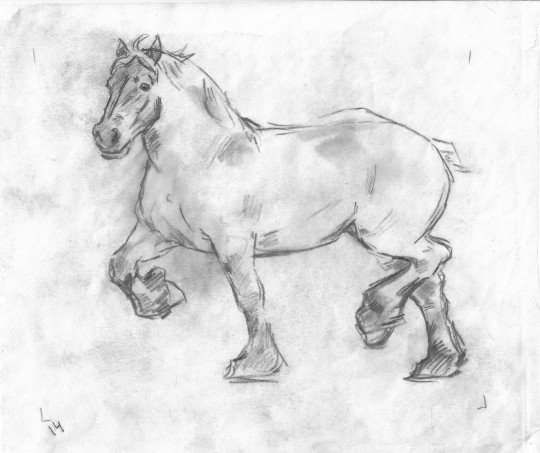


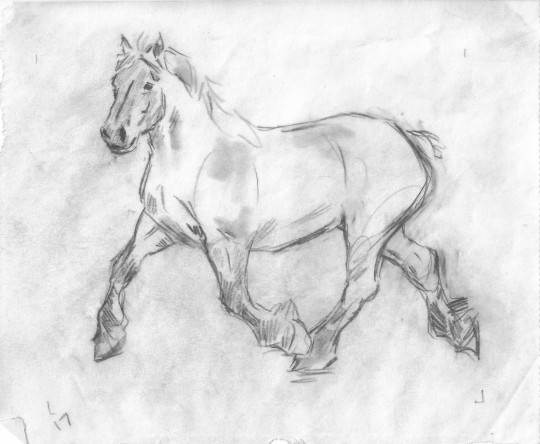
The 17 pencil drawings I drew on greaseproof paper for the latest trot animation.
#art#artist#artists on tumblr#animal art#horse#horses#equineart#horseart#animation#traditional animation#hand drawn animation#draught horse#draft horse#belgian draft#pencil sketch#pencil drawing
408 notes
·
View notes
Text
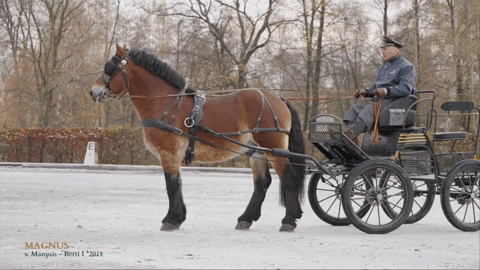
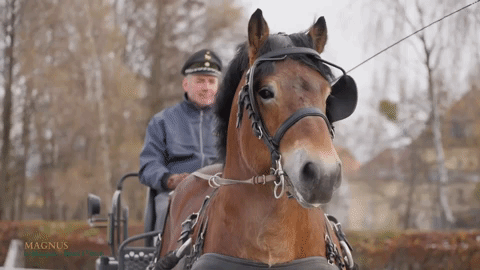
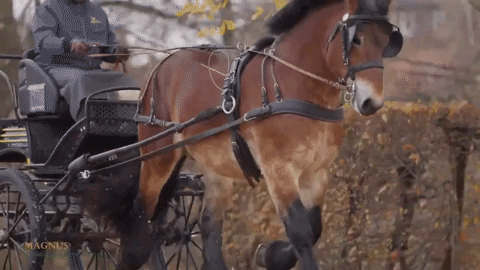

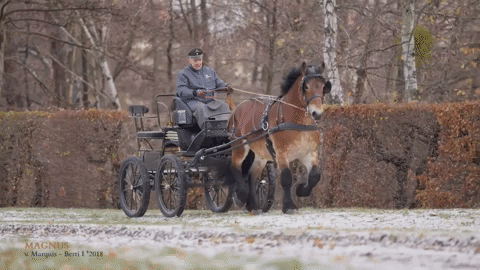
Magnus, 2018 Rhenish German Coldblood stallion
Marquis x Berti I
248 notes
·
View notes
Text
Clydes were rather underwhelmed with my pumpkin carving
761 notes
·
View notes
Text

Practicing my faster and looser style of pieces so I can try to draw more things in a shorter period of time and appease my incredibly short attention span.
The character Iomhair from a story @momolady wrote about a lovely centaur and his fiancee in their apple orchard. 🍎
#day in the life of a centaur#centaur art#centaurs#centaur#draft horse#draft horse centaur#not my oc#fantasy creature#fantasy character#fantasy#ohuhu alcohol markers#ohuhu markers#sketch#marker sketch
680 notes
·
View notes